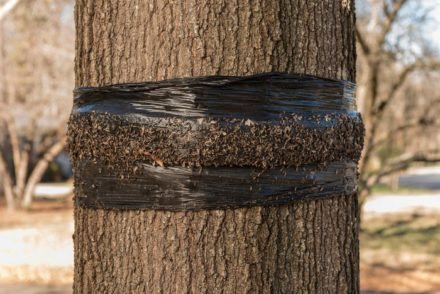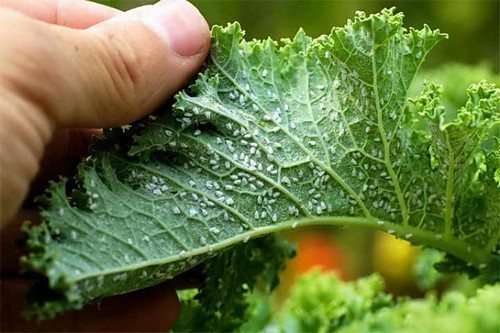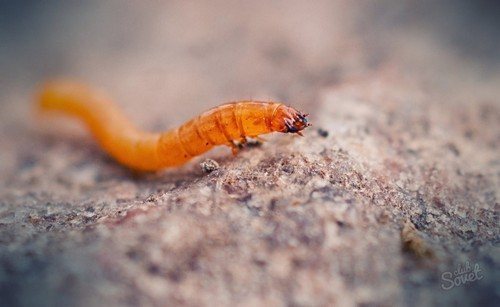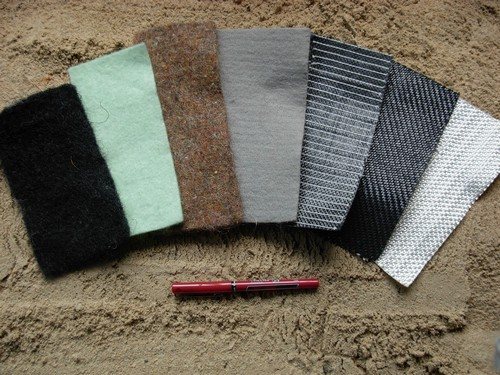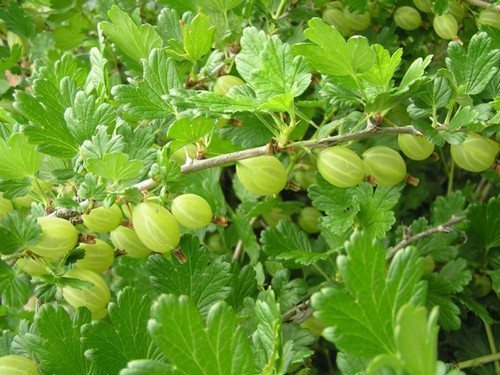Summer is the most favorable weather for all living things, especially for breeding pests. Fruit trees suffer the most: due to pests, there may be no harvest in the warm season. Insects crawl up the branches and get to the fruits and foliage. As a result, trees are damaged and their productivity decreases.
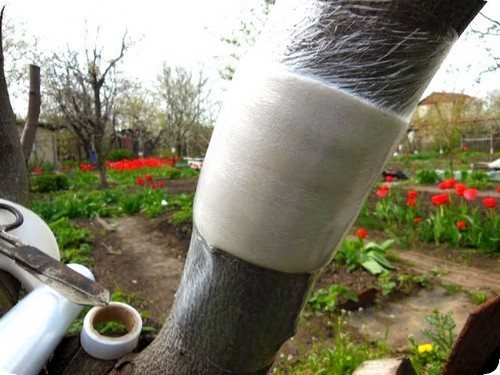
Both beginners and experienced gardeners know the damage that seemingly harmless ants, codling moths, leaf beetles, aphids, mites, leaf rollers and weevils cause to trees. It is impossible to list all the garden insects, but you need to remember that some of them pose a serious threat to your garden and are more common.
What are catch belts
In the fight against uninvited garden guests, you can use biological products, chemicals, and spraying with poisons as the fastest-acting method. But all this is not suitable if the tree bears fruit or those grow nearby. It is better to start creating trapping belts in the spring, when insects are low in activity or are in hibernation.
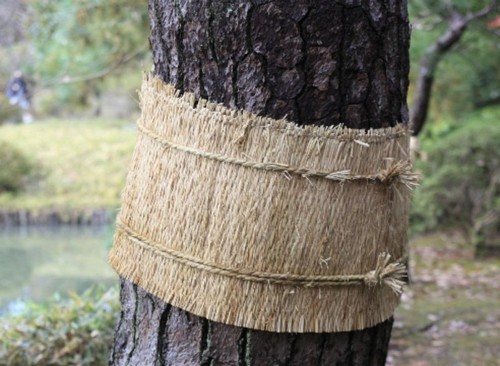
The catching belt is a barrier for pests, which tightly holds them and prevents them from getting close to foliage and fruits. This trap has advantages over pesticides:
- Harmless and environmentally friendly. The presence of a protective belt installed on a tree will not affect fruitfulness and health;
- There are no restrictions on use. The fishing belt can serve for months and is suitable for repeated use throughout the season;
- Simplicity and convenience.It’s easy to make a hunting belt yourself using scrap materials, or you can find it in stores;
- Efficiency. The effect of the trap applies exclusively to creeping insects, which cannot bypass it and are caught.
But you should also be aware of possible disadvantages:
- The trap can catch insects that are harmless to trees: ladybugs, bumblebees, bees;
- If the strip is fastened too tightly, air will not flow to the bark, and it will begin to dampen;
- Before winter it is better to remove the belt. The onset of cold weather is accompanied by excess moisture. Moisture accumulated under the protective belt may cause the bark to peel off, or cracks may form in the bark. In the pre-winter period this threatens with frost damage.
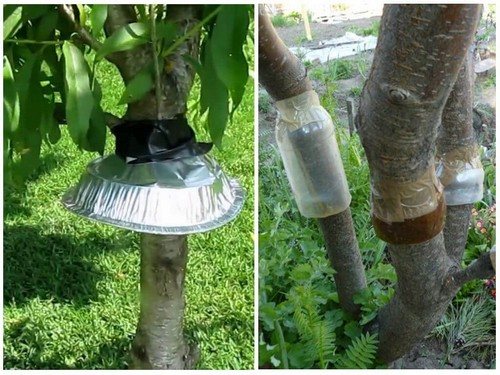
Adhesive protective belt
A glue trap is a wide strip of material (such as paper) coated with an adhesive substance (this may be glue that does not dry). Such belts are especially effective on young trees with bark without cracks; they block the path of most pests, with the exception of ants.
The effect is this: in a sticky environment, insects are immobilized and die.
The basis is foam rubber, burlap or rolled paper. Calculate the length of the flap so that it tightly clasps the trunk, the width is from 20 cm. Attach the material to the trunk in any convenient way and coat the front part with a spatula or knife with special glue for hunting belts (here are the common brands: Vesta, Biomaster, Uniflex ").

Dry protective belts for trees
Dry traps include all kinds of funnel variations.The scheme of action is simple: insects can crawl up or down the tree. Regardless of the direction, they crawl into a funnel and end up in a dead end.
Funnel belt
We tie paper, burlap or thick fabric 20 cm wide tightly with the upper edge to the tree so that the lower paradise opens up and resembles a skirt or cone. The insect will easily pass into the funnel, but will not be able to get out: the hole will be greatly narrowed.
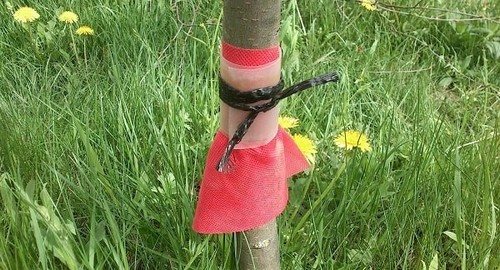
Belt-collar
The next type of dry belt is aimed, on the contrary, at getting rid of insects that descend from the crown along the trunk to the ground. To make it you will need a rubber strip half a centimeter thick. Secure it at a height of 50 cm, glue the ends together. You should get a cup-shaped container on top: just bend the edges of the rubber. Pour sunflower oil into the resulting collar, and the insects will definitely not escape from the trap.
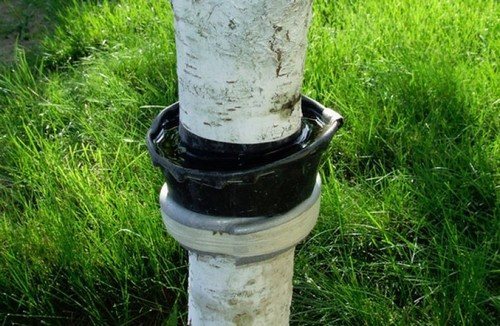
Double-sided funnel
This protective belt is universal. All insects that get there cannot get out, no matter which side they crawled in from. It will be more difficult to make: find burlap or fabric 30 cm wide. Tie the belt in the middle so that it fits tightly to the bark. There will be widened edges at the top and bottom, reminiscent of a skirt shape. Fill the top and bottom holes with clay so that the insects remain in a viscous substance.
Poisonous Defense Belt
Many fear that the poison will poison the fruits. But this is not so: the belt is fixed at the base of the trunk and does not affect the top in any way and does not penetrate to the roots. By the way, the poison is a guarantee of complete neutralization of the tree from insects.Creating a poison belt is almost no different from a regular one:
- You will need burlap, fabric or a piece of paper 25 cm wide;
- Soak the selected material in the insecticide solution;
- At a distance of half a meter from the surface of the ground, secure it in the same way as in the previous methods;
- Wrap the top part of the material with film so that the poison does not erode.
The material for the double-sided funnel can be soaked in the same way with an insecticide solution and then tied to the tree.
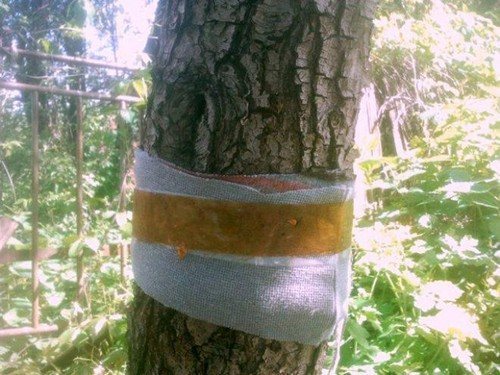
Hunting belts are a simple and safe option for protection against annoying insects (aphids, beetles, caterpillars). Even a beginner can cope with the creation and installation of protective belts in the garden.


